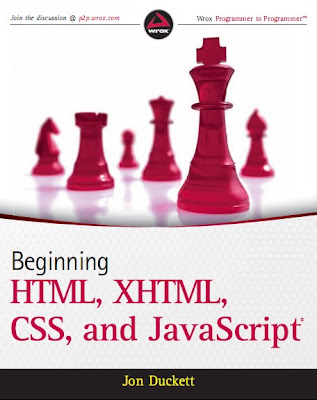
You will be learning how to control the structure of a web page using XHTML, how to style it using CSS, and how to add interactivity using JavaScript. Learning how this code works will give you a solid foundation for building web sites, and alongside this you will see plenty of practical advice that helps you learn about issues you are likely to meet when you start building sites.
While learning how to code, you will see lots of advice on usability how to build web sites that are easy to use and enable visitors to achieve what they came for. In several parts of the book I also discuss issues regarding accessibility making a site available to as many users as possible (in particular, people with disabilities, who may have impaired vision or difficulty using a mouse). In the same way that many countries have laws requiring architects to design buildings that are accessible, there are strict accessibility guidelines for building web sites to ensure they do not exclude visitors. A little careful thought before you build your web site means that people with vision impairments can either view your site with larger text or have it read to them by a piece of software called a screen reader . Whole books are dedicated to the topics of usability and accessibility and are aimed at web developers who need to learn how to make their code more accessible and usable. My aim is to teach you to code with these principles in mind from the start.
In addition to learning how to code usable and accessible web sites, I will also be sharing lots of tips and techniques that professional web designers use when creating new sites. These techniques make it easier for anyone to lay out pages in a more attractive way. You will even learn about creating sites that work on devices such as mobile phones and game consoles, which are increasingly being used to access the Web.
You will probably be relieved to know that many of the browsers on such devices employ the same languages that you will be learning in this book and that by learning to use XHTML with CSS you will be able to create web sites that work on a variety of platforms, and will therefore last much longer than those written in older versions of HTML.
While it is important to learn the latest practices for creating web pages using these languages, if you intend to create web sites that anyone can access, you will also have to learn some older aspects of the languages you meet. This is important because not everyone has the latest web browser installed on his or her computer; as a result, the latest features may not work for everyone, and in such cases you need to learn techniques that will work in some older browsers that are still popular today. In order to make sure pages work in older browsers, you will see several occasions throughout the book where certain features of a language are marked as deprecated; this means that while this feature should still work in modern browsers, you are being warned that software might not support it much longer.
By the end of this book, you will be writing web pages that not only use the latest technologies, but also are still viewable by older browsers pages that look great, and can also be accessed by those with visual and physical impairments. These are pages that not only address the needs of today’s audiences but can also work on emerging technologies and therefore the skills you will learn should be relevant longer.
Download via Ziddu
Download via Megaupload